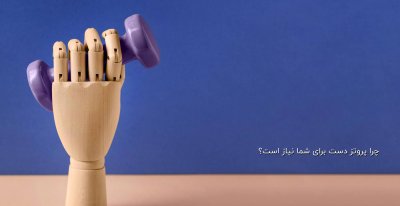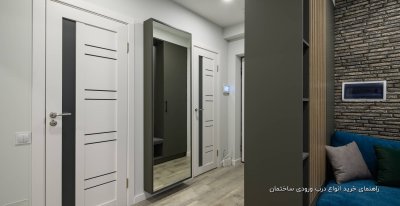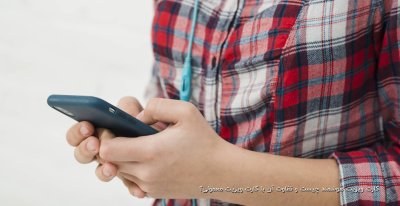سلام
من برای درست کردن یه نمودار گرافیکی احتیاج به مبدل فونت یونیکد به ایران سیستم با زبان php دارم. کسی آمادشو داره؟
مشکل اینجاست که تو فایل گرافیکی رشته ای مثل "تست" بصورت "ت س ت" چاپ میشه.
یه چیزی شبیه این ولی با PHP. این مبدل با perl نوشته شده:
من برای درست کردن یه نمودار گرافیکی احتیاج به مبدل فونت یونیکد به ایران سیستم با زبان php دارم. کسی آمادشو داره؟
مشکل اینجاست که تو فایل گرافیکی رشته ای مثل "تست" بصورت "ت س ت" چاپ میشه.
یه چیزی شبیه این ولی با PHP. این مبدل با perl نوشته شده:
کد:
#!/usr/bin/perl
use utf8;
# arabjoin - a simple filter to render Arabic text
# © 1998-06-18 [email protected]
# Freeware license at http://czyborra.com/
# Latest version at http://czyborra.com/unicode/
# PostScript printout at http://czyborra.com/unicode/arabjoin.ps.gz
# This filter takes Arabic text (encoded in UTF-8 using the Unicode
# characters from the U+0600 Arabic block in logical order) as input
# and performs Arabic glyph joining on it and outputs a UTF-8 octet
# stream that is no longer logically arranged but in a visual order
# which gives readable results when formatted with a simple Unicode
# renderer like Yudit that does not handle Arabic differently yet
# but simply outputs all glyphs in left-to-right order.
# This little script also demonstrates that Arabic rendering is not
# that complicated after all (it makes you wonder why some software
# companies are still asking hundreds of dollars from poor students
# who just want to print their Arabic texts) and that even Perl 4 can
# handle Unicode text in UTF-8 without any nifty new add-ons.
# Usage examples:
# echo "أهلاً بالعالم!" | arabjoin
# prints !ﻢﻟﺎﻌﻟﺎﺑ ًﻼﻫﺃ
# which is the Arabic version of "Hello world!"
# | recode ISO-8859-6..UTF-8 | arabjoin | uniprint -f cyberbit.ttf
# prints an Arabic mail of charset=iso-8859-6-i on your printer
# | arabjoin | xviewer yudit
# delegates an Arabic UTF-8 message to a better viewer
# ftp://sunsite.unc.edu/pub/Linux/apps/editors/X/ has uniprint in yudit-1.0
# ftp://ftp.iro.umontreal.ca/pub/contrib/pinard/pretest/ has recode-3.4g
# http://czyborra.com/unicode/ has arabjoin
# http://czyborra.com/unix/ has xviewer
# http://www.bitstream.com/cyberbit.htm or
# ftp://ccic.ifcss.org/pub/software/fonts/unicode/ms-win/ or
# ftp://ftp.irdu.nus.sg/pub/language/bitstream/ has cyberbit.ttf
# This is how we do it: First we learn the presentation forms of each
# Arabic letter from the end of this script:
while(<DATA>)
{
($char, $_) = /^(\S+)\s+(\S+)/;
($isolated{$char},$final{$char},$medial{$char},$initial{$char}) =
split("",$_);
# /([\xC0-\xFF][\x80-\xBF]+)/g;
}
# Then learn the (incomplete set of) transparent characters:
foreach $char (split (" ", "
ً ٌ ٍ َ ُ ِ ٰ
ۗ ۘ ۙ ۚ ۛ ۜ ۟ ۠ ۡ ۢ ۣ ۤ ۧ ۨ ۪ ۫ ۬ ۭ"))
{
$transparent{$char}=1;
}
# Finally we can process our text:
while (<>)
{
s/\n$//; # chop off the end of the line so it won't jump upfront
{
require Encode;
Encode::_utf8_on($_);
@uchar = # UTF-8 character chunks
split("",$_);
# /([\x00-\x7F]|[\xC0-\xFF][\x80-\xBF]+)/g;
}
# We walk through the line of text and do contextual analysis:
for ($i = $[; $i <= $#uchar; $i = $j)
{
for ($b=$uchar[$j=$i]; $transparent{$c=$uchar[++$j]};){};
# The following assignment is the heart of the algorithm.
# It reduces the Arabic joining algorithm described on
# pages 6-24 to 6-26 of the Arabic character block description
# in the Unicode 2.0 Standard to four lines of Perl:
$uchar[$i] = $a && $final{$c} && $medial{$b}
|| $final{$c} && $initial{$b}
|| $a && $final{$b}
|| $isolated{$b}
|| $b;
# print $uchar[$i] . "\n";
$a = $initial{$b} && $final{$c};
}
# Until the Unicode Consortium publishes its Unicode Technical
# Report #9 (Bidirectional Algorithm Reference Implementation)
# at http://www.unicode.org/unicode/reports/techreports.html
# let us oversimplify things a bit and reverse everything:
$_ = join ('', @uchar);
#$_ = system ('fribidi',$_);
#$_= join ('', reverse @uchar);
# The following 8 obligatory LAM+ALEF ligatures are encoded in the
# U+FE70 Arabic Presentation Forms-B block in Unicode's
# compatibility zone:
s/ﺂﻟ/ﻵ/g;
s/ﺂﻠ/ﻶ/g;
s/ﺄﻟ/ﻷ/g;
s/ﺄﻠ/ﻸ/g;
s/ﺈﻟ/ﻹ/g;
s/ﺈﻠ/ﻺ/g;
s/ﺎﻟ/ﻻ/g;
s/ﺎﻠ/ﻼ/g;
# Bitstream's Cyberbit font offers 57 of the other 466 optional
# ligatures in the U+FB50 Arabic Presentation Forms-A block:
s/ﻢﺗ/ﰎ/g;
s/ﻲﻓ/ﰲ/g;
s/ﺞﻟ/ﰿ/g;
s/ﺢﻟ/ﱀ/g;
s/ﺦﻟ/ﱁ/g;
s/ﻢﻟ/ﱂ/g;
s/ﻰﻟ/ﱃ/g;
s/ﻲﻟ/ﱄ/g;
s/ﻢﻧ/ﱎ/g;
s/ٌّ/ﱞ/g;
s/ٍّ/ﱟ/g;
s/َّ/ﱠ/g;
s/ُّ/ﱡ/g;
s/ِّ/ﱢ/g;
s/ﺮﺒ/ﱪ/g;
s/ﻦﺒ/ﱭ/g;
s/ﻲﺒ/ﱯ/g;
s/ﺮﺘ/ﱰ/g;
s/ﻦﺘ/ﱳ/g;
s/ﻲﺘ/ﱵ/g;
s/ﻲﻨ/ﲏ/g;
s/ﺮﻴ/ﲑ/g;
s/ﻦﻴ/ﲔ/g;
s/ﺠﺑ/ﲜ/g;
s/ﺤﺑ/ﲝ/g;
s/ﺨﺑ/ﲞ/g;
s/ﻤﺑ/ﲟ/g;
s/ﺠﺗ/ﲡ/g;
s/ﺤﺗ/ﲢ/g;
s/ﺨﺗ/ﲣ/g;
s/ﻤﺗ/ﲤ/g;
s/ﻤﺛ/ﲦ/g;
s/ﻤﺟ/ﲨ/g;
s/ﻤﺣ/ﲪ/g;
s/ﻤﺧ/ﲬ/g;
s/ﻤﺳ/ﲰ/g;
s/ﺠﻟ/ﳉ/g;
s/ﺤﻟ/ﳊ/g;
s/ﺨﻟ/ﳋ/g;
s/ﻤﻟ/ﳌ/g;
s/ﻬﻟ/ﳍ/g;
s/ﺠﻣ/ﳎ/g;
s/ﺤﻣ/ﳏ/g;
s/ﺨﻣ/ﳐ/g;
s/ﻤﻣ/ﳑ/g;
s/ﺠﻧ/ﳒ/g;
s/ﺤﻧ/ﳓ/g;
s/ﺨﻧ/ﳔ/g;
s/ﻤﻧ/ﳕ/g;
s/ﺠﻳ/ﳚ/g;
s/ﺤﻳ/ﳛ/g;
s/ﺨﻳ/ﳜ/g;
s/ﻤﻳ/ﳝ/g;
s/ﺤﻤﻟ/ﶈ/g;
s/ﻪﻠﻟﺍ/ﷲ/g;
s/ﻢﻠﺳﻭ/ﻪﻴﻠﻋ/g;
s/ﻪﻟﺎﻠﺟ/ﻞﺟ/g;
print "$_\n";
}
# The following table lists the presentation variants of each
# character. Each value from the U+0600 block means that the
# necessary glyph variant has not been assigned a code in Unicode's
# U+FA00 compatibility zone. You may want to insert your private
# glyphs or approximation glyphs for them:
__END__
ء ﺀ
آ ﺁﺂ
أ ﺃﺄ
ؤ ﺅﺆ
إ ﺇﺈ
ئ ﺉﺊﺌﺋ
ا ﺍﺎ
ب ﺏﺐﺒﺑ
ة ﺓﺔ
ت ﺕﺖﺘﺗ
ث ﺙﺚﺜﺛ
ج ﺝﺞﺠﺟ
ح ﺡﺢﺤﺣ
خ ﺥﺦﺨﺧ
د ﺩﺪ
ذ ﺫﺬ
ر ﺭﺮ
ز ﺯﺰ
س ﺱﺲﺴﺳ
ش ﺵﺶﺸﺷ
ص ﺹﺺﺼﺻ
ض ﺽﺾﻀﺿ
ط ﻁﻂﻄﻃ
ظ ﻅﻆﻈﻇ
ع ﻉﻊﻌﻋ
غ ﻍﻎﻐﻏ
ـ ــــ
ف ﻑﻒﻔﻓ
ق ﻕﻖﻘﻗ
ك ﻙﻚﻜﻛ
ل ﻝﻞﻠﻟ
م ﻡﻢﻤﻣ
ن ﻥﻦﻨﻧ
ه ﻩﻪﻬﻫ
و ﻭﻮ
ى ﻯﻰ // ﯩﯨ
ي ﻱﻲﻴﻳ
ٱ ﭐ // ﭑ
ٲ ٲٲ
ٳ ٳٳ
ٴ ٴ
ٵ ٵٵ
ٶ ٶٶ
ٷ ﯝٷ
ٸ ٸٸٸٸ
ٹ ﭦﭧﭩﭨ
ٺ ﭞﭟﭡﭠ
ٻ ﭒﭓﭕﭔ
ټ ټټټټ
ٽ ٽٽٽٽ
پ ﭖﭗﭙﭘ
ٿ ﭢﭣﭥﭤ
ڀ ﭚﭛﭝﭜ
ځ ځځځځ
ڂ ڂڂڂڂ
ڃ ﭶﭷﭹﭸ
ڄ ﭲﭳﭵﭴ
څ څڅڅڅ
چ ﭺﭻﭽﭼ
ڇ ﭾﭿﮁﮀ
ڈ ﮈﮉ
ډ ډډ
ڊ ڊڊ
ڋ ڋڋ
ڌ ﮄﮅ
ڍ ﮂﮃ
ڎ ﮆﮇ
ڏ ڏڏ
ڐ ڐڐ
ڑ ﮌﮍ
ڒ ڒڒ
ړ ړړ
ڔ ڔڔ
ڕ ڕڕ
ږ ڕږ
ڗ ڗڗ
ژ ﮊﮋ
ڙ ڙڙ
ښ ښښښښ
ڛ ڛڛڛڛ
ڜ ڜڜڜڜ
ڝ ڝڝڝڝ
ڞ ڞڞڞڞ
ڟ ڟڟڟڟ
ڠ ڠڠڠڠ
ڡ ڡڡڡڡ
ڢ ڢڢڢڢ
ڣ ڣڣڣڣ
ڤ ﭪﭫﭭﭬ
ڥ ڥڥڥڥ
ڦ ﭮﭯﭱﭰ
ڧ ڧڧڧڧ
ڨ ڨڨڨڨ
ک ﮎﮏﮑﮐ
ڪ ڪڪڪڪ
ګ ګګګګ
ڬ ڬڬڬڬ
ڭ ﯓﯔﯖﯕ
ڮ ڮڮڮڮ
گ ﮒﮓﮕﮔ
ڰ ڰڰڰڰ
ڱ ﮚﮛﮝﮜ
ڲ ڲڲڲڲ
ڳ ﮖﮗﮙﮘ
ڴ ڴڴڴڴ
ڵ ڵڵڵڵ
ڶ ڶڶڶڶ
ڷ ڷڷڷڷ
ں ﮞﮟںں
ڻ ﮠﮡﮣﮢ
ڼ ڼڼڼڼ
ڽ ڽڽڽڽ
ھ ﮪﮫﮭﮬ
ۀ ﮤﮥ
ہ ﮦﮧﮩﮨ
ۂ ۂۂ
ۃ ۃۃ
ۄ ۄۄ
ۅ ﯠﯡ
ۆ ﯙﯚ
ۇ ﯗﯘ
ۈ ﯛﯜ
ۉ ﯢﯣ
ۊ ۊۊ
ۋ ﯞﯟ
ی ﯼﯽﯿﯾ
ۍ ۍۍ
ێ ێێێێ
ې ﯤﯥﯧﯦ
ہ ہہہہ
ۂ ۂۂ
ۃ ۃۃ
ۄ ۄۄ
ۅ ۅۅ
ۆ ۆۆ
ۇ ۇۇ
ۈ ۈۈ
ۉ ۉۉ
ۊ ۊۊ
ۋ ۋۋ
ی یییی
ۍ ۍۍ
ێ ێێێێ
ې ېېېې
ۑ ۑۑۑۑ
ے ﮮﮯ
ۓ ﮰﮱ
ە ە
آخرین ویرایش:










